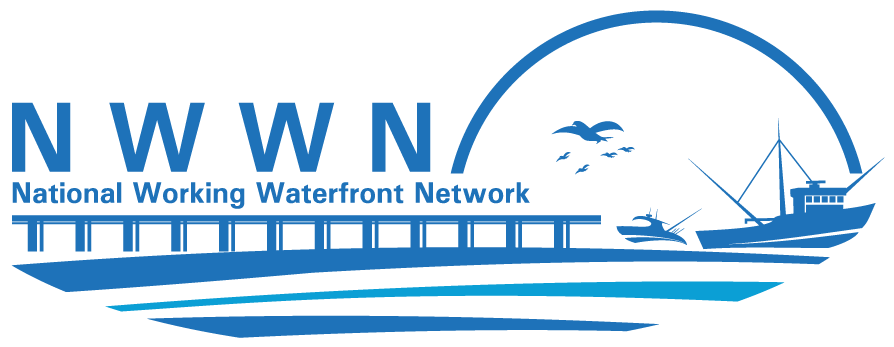The following resources may be helpful as your communities implement initiatives to protect working waterfronts:
Digital Coast
- Coastal County Snapshots:The Coastal County Snapshots provides users with easy-to-understand charts and graphs that provide a quick visual overview of flood exposure, wetlands benefits, and economic benefits from the ocean and Great Lakes jobs. Flood snapshot shows coastal county population, critical facilities and land cover exposed to flood risk.
- Flood Mapping Tools: NOAA’s Digital Coast includes a number of flood mapping tools which can be used to inform a local vulnerability assessment for your community’s waterfront. A vulnerability assessment can be valuable for developing local hazard mitigation strategies and prioritizing hazard mitigation projects.
- Coastal Flood Exposure Mapper enables users to explore maps that show people, places, and natural resources exposed to coastal flood hazards and create a collection of maps to share and communicate about flood exposure.
- Sea Level Rise Viewer allows users to visualize community-level impacts from coastal flooding or sea level rise. Photo simulations of how future flooding might impact local landmarks are also provided, as well as data related to water depth, connectivity, flood frequency, socio-economic vulnerability, wetland loss and migration, and mapping confidence.
- Great Lakes Level Viewer allows users to create visuals that capture lake level changes in the Great Lakes, including potential shoreline and coastal impacts.
- Economic Training and Tools: NOAA’s Digital Coast provides access to several economic resources focused on the jobs dependent on marine resources. Many of these jobs are part of a communities working waterfront. The information about the marine jobs can be used for everything from comprehensive planning and hazard mitigation planning to grant applications.
- ENOW Explorer streamlines the task of obtaining and comparing economic data, both county and state, for the six sectors dependent on the marine resources: living resources, marine construction, marine transportation, offshore mineral resources, ship and boat building, and tourism and recreation.
- For those needing to tell their story at a local level with customized data, the Estimating the Local Marine Economy training is available. This day and a half course will help participants tell a compelling story about the importance of their waterfront by identifying local marine jobs and using local economic data. The training also walks participants through the steps to customize the data to their local area.
- Ocean Reports Tool: The Ocean Reports Tool is a web-based application that provides coastal and ocean planners with a high-level analysis for their custom-drawn area of interest. It provides summary statistics and infographics for six main topics: general information, energy and minerals, natural resources and conservation, oceanographic and biophysical, transportation and infrastructure, and economics and commerce.
- Nature-Based Infrastructure: Nature (and man-made systems) that mimic natural processes provides effective solutions for minimizing coastal flooding, erosion, and runoff. The Natural Infrastructure Topics Page provides a sampling of Digital Coast resources useful for communities considering a natural infrastructure approach.
Community & Stakeholder Engagement
- 2008 Public Access Survey
- Harpswells’ Working Waterfronts
- How to Conduct a Community Visioning Process
- Introduction to Stakeholder Participation
- Moosabec: The Downeast Fishing Community of Beals and Jonesport
- York River Use Conflict Report
Financing
Land Conservation, Transfer, Acquisition
Mapping, Inventory, Study
- Access to the Waterfront: Issues and Solutions Across the Nation
- Mapping Maine’s Working Waterfront, A Statewide Inventory by the Island Institute
- The Southwest Alabama Working Waterfront Inventory Project
- Waterfront Access Study Committee Final Report, April 13, 2007
Planning
- A toolbox for sustaining working waterfronts; Assessing applications in Newport, Oregon
- Gig Harbor Shoreline Master Plan update
- Guiding the Way to Waterfront Revitalization: Best Management Practices
- Making the Most of Your Waterfront: Accompanying video
- Making the Most of Your Waterfront: Enhancing Waterfronts to Revitalize Communities
- Plan Highlights of the Trinidad-Westhaven Coastal Watershed Management Plan
- Revisting the Foss Waterway Master Redevelopment Strategy 2011 Update
- Strengthening Downtowns through Local Waterfront Revitalization Programs
- User’s Guide to Dredging in Tidewater Virginia
- Waterfront Revitalization for Small Cities
Policy/Regulation
- Accessing the Maine Coast website
- Alabama, Hawaii, Mississippi, New Jersey, and Virginia Coastal Access websites
- Public Shoreline Access in Maine: A Citizen’s Guide to Ocean and Coastal Law
Taxation
Zoning
- City of Portland Waterfront Central Zone, Policy and Zoning Process, Summary Presentation to the Portland City Council, August 2010
- Michigan State University Extension “Form-Based Codes and Michigan Enabling Acts”
- Smart Growth Tactics: Form-Based Codes, Michigan Association of Planning
- Waterfront Central Zone Marine Use Inventory: June 2011

